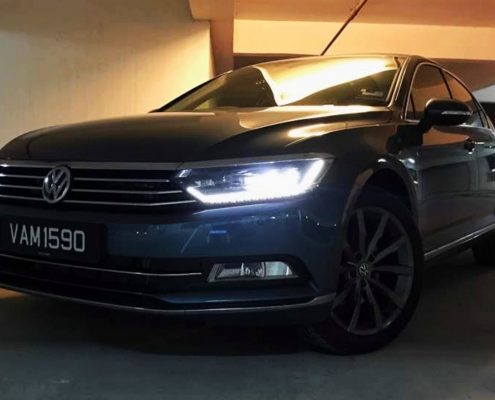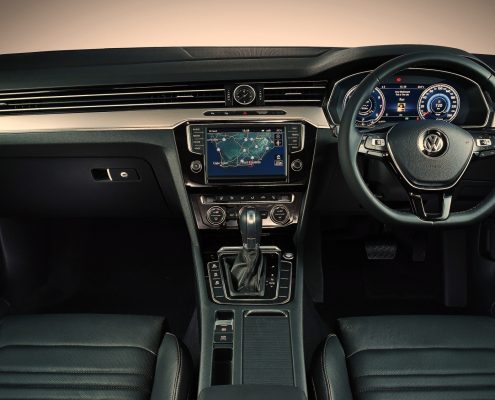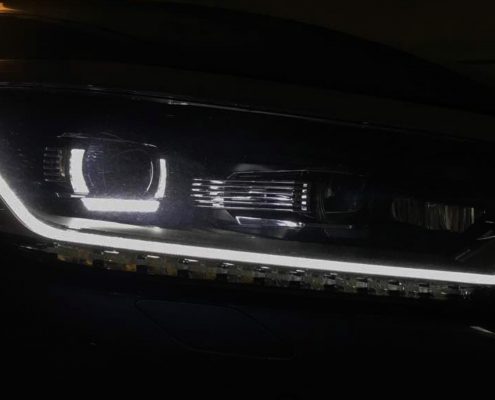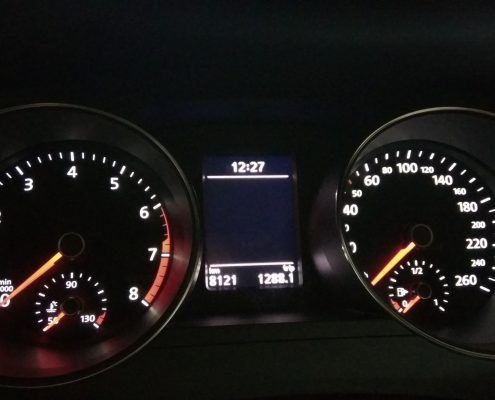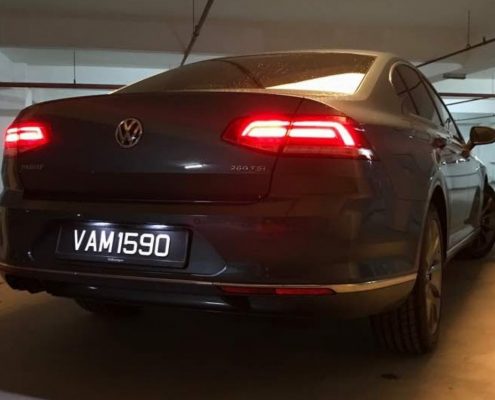Imagine this, for a moment. You’re in your late twenties/early thirties, work a good job, and are on the cusp of a big promotion. You reckon that now, this time, you deserve a proper reward for your efforts. Like many, you think that perhaps it’s about time you got behind the wheel of a proper premium car, and ditch the nice but ultimately mass-market ride you have now.
The car you already have, has served you well. Probably about 5 years old, some generic D-segment saloon with acres of space and comes as standard with approval of your parents. While it’s never done anything wrong, you can’t help but dislike it, especially as it’s now getting on a bit. And it lacks the character that you’d expect a proper luxury car would have. That didn’t bug you when you bought it, but it’s bugging you now.
You’re an up-and-comer, with discerning taste and exacting standards, damnit. So you visit some showroom of some luxury manufacturer, and you start browsing in your price range. Predictably, it’s all very nice. Very nice, very plush, very… snug. You realise that you’re trading space for prestige, and the pragmatist in you starts pulling a fuss.
You catch a glimpse of your car parked outside, and you recall how sometimes your mother can’t hear you when you talk, it’s so big. You’re probably asking yourself, ‘Why must I choose between practicality and prestige? Why can’t I have both?’
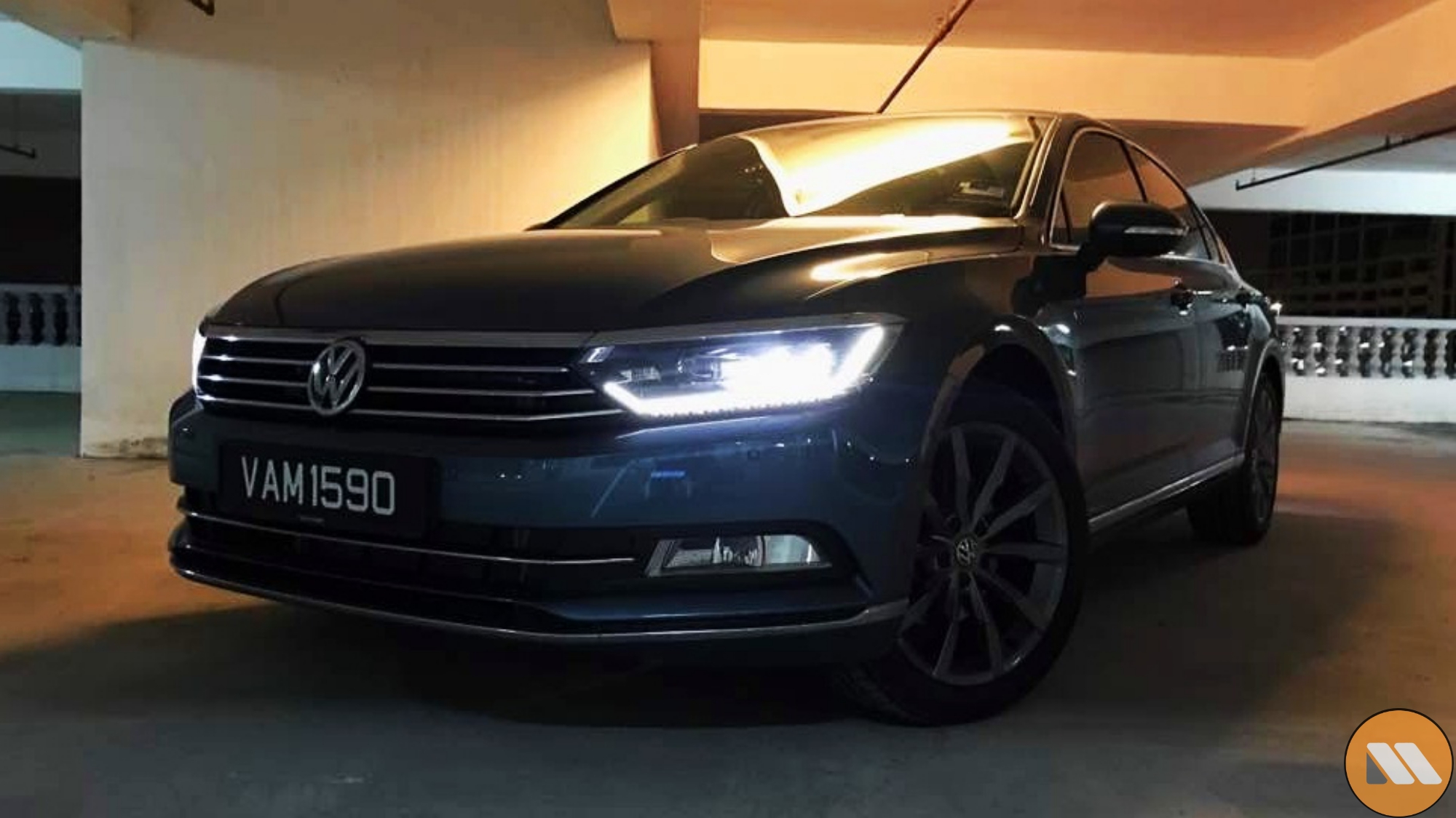
The Volkswagen Passat promises to be both. It has a German badge on its nose, German engineering under its skin, and offers more than enough space to swing two, even three cats. There are turbocharged motors up front and double-clutch gearboxes in the middle. And because it’s front-wheel drive, it’s frugal too.
Under the bonnet you’ll find either a 1.8-litre turbocharged petrol mill, or a bigger 2.0-litre turbo petrol with the running gear from the Volkswagen Golf GTI. The smaller 1.8-TSI puts out a respectable 180PS and 250Nm, and is paired to a 7-speed double-clutch gearbox, and powers the entry-level Trendline and mid-range Comfortline variant. Splash out on a Highline model and you get a meatier 220PS and 350Nm thanks to the bigger displacement, mated to a six-speed DSG gearbox.
Sampling the Comfortline Plus model means we get things like 18-inch ten-spoke alloy wheels, and window tint, on top of the standard Comfortline kit like LED headlights, keyless entry and go, front fog lights, LED taillights, automatic wipers, tri-zone climate control, electrically-operated front seats with memory and massage function for the driver, autonomous parking capability, a 6.5-inch infotainment screen, and a powered bootlid.
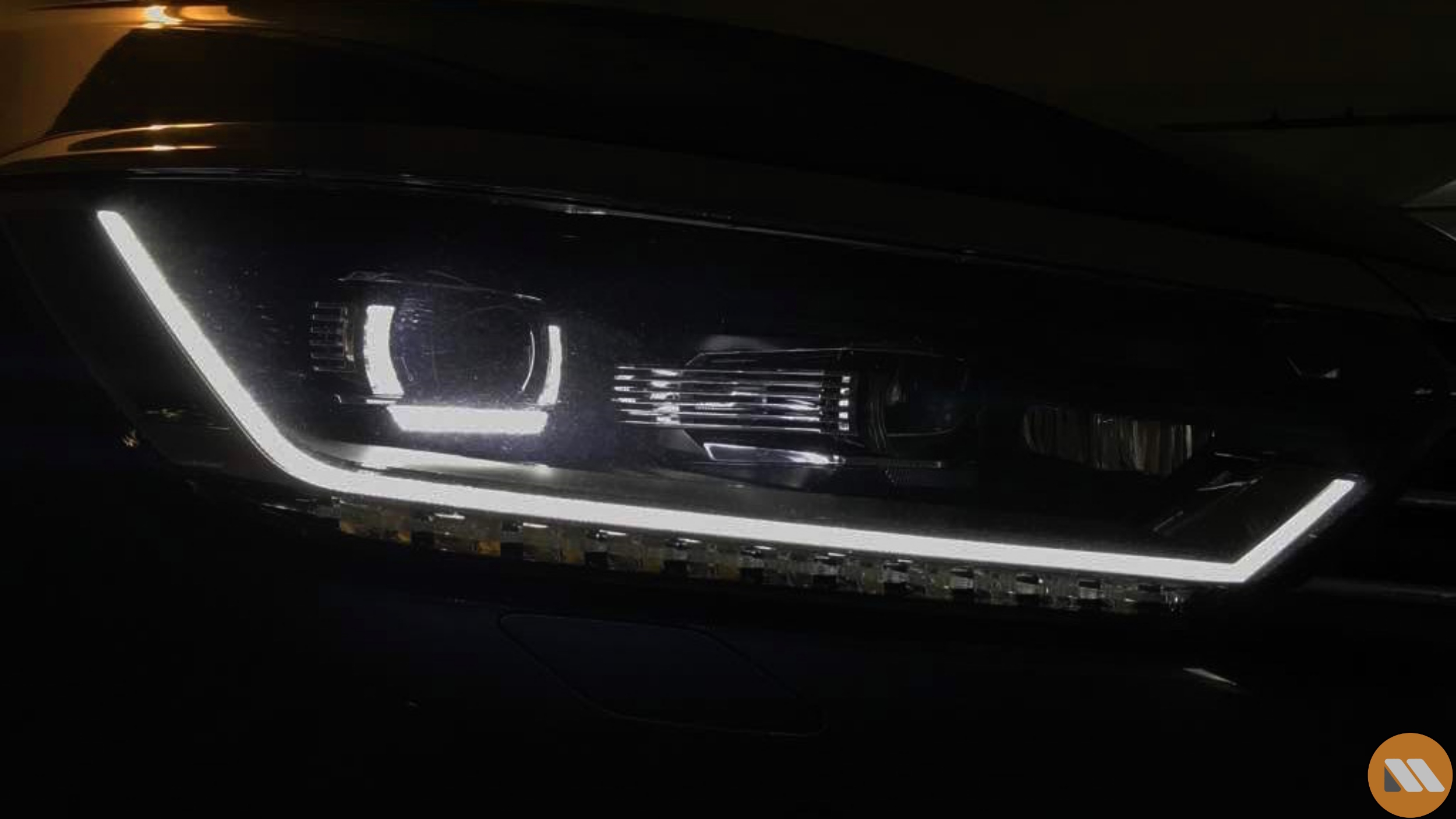
From the get-go, it’s clear that the Passat fashions itself as a car from the class above, capable of tempting buyers from the premium segment into a saloon that offers greater practicality (and often better features) for far, far less. It has a restrained, mature look to it that reeks of modern German automotive aesthetic, marrying traditional proportions to contemporary features.
You immediately notice the sharp, defining LED headlights up front with their unique light signature, that blend seamlessly into the grille. The profile of the car is sharp and handsome, while the rear is… somewhat unremarkable. Perhaps the designers spent too much time fixated with the face of the Passat that the rump went somewhat ignored.
The cabin of the Passat is perhaps the greatest display of its aspirations. Truly, the ergonomics, aesthetics, and tactility of the interior put it in good stead among premium competitors from a class above. In fact, the full-width air conditioning vent up front is practically photocopied from the Audi A4 (which the Passat bears only minimal relation to), though the rest of the car only mimics the Audi insofar as build quality is concerned.
Of course, the Passat betrays its mass-market positioning when adventurous hands and fingers venture lower into the cabin, where scratchy plastics and unforgiving surfaces have been used liberally. This isn’t really an issue though, because not only are these surfaces rarely interacted with, but also because if Volkswagen hadn’t cut corners here, you’d be paying a lot more for your Passat.
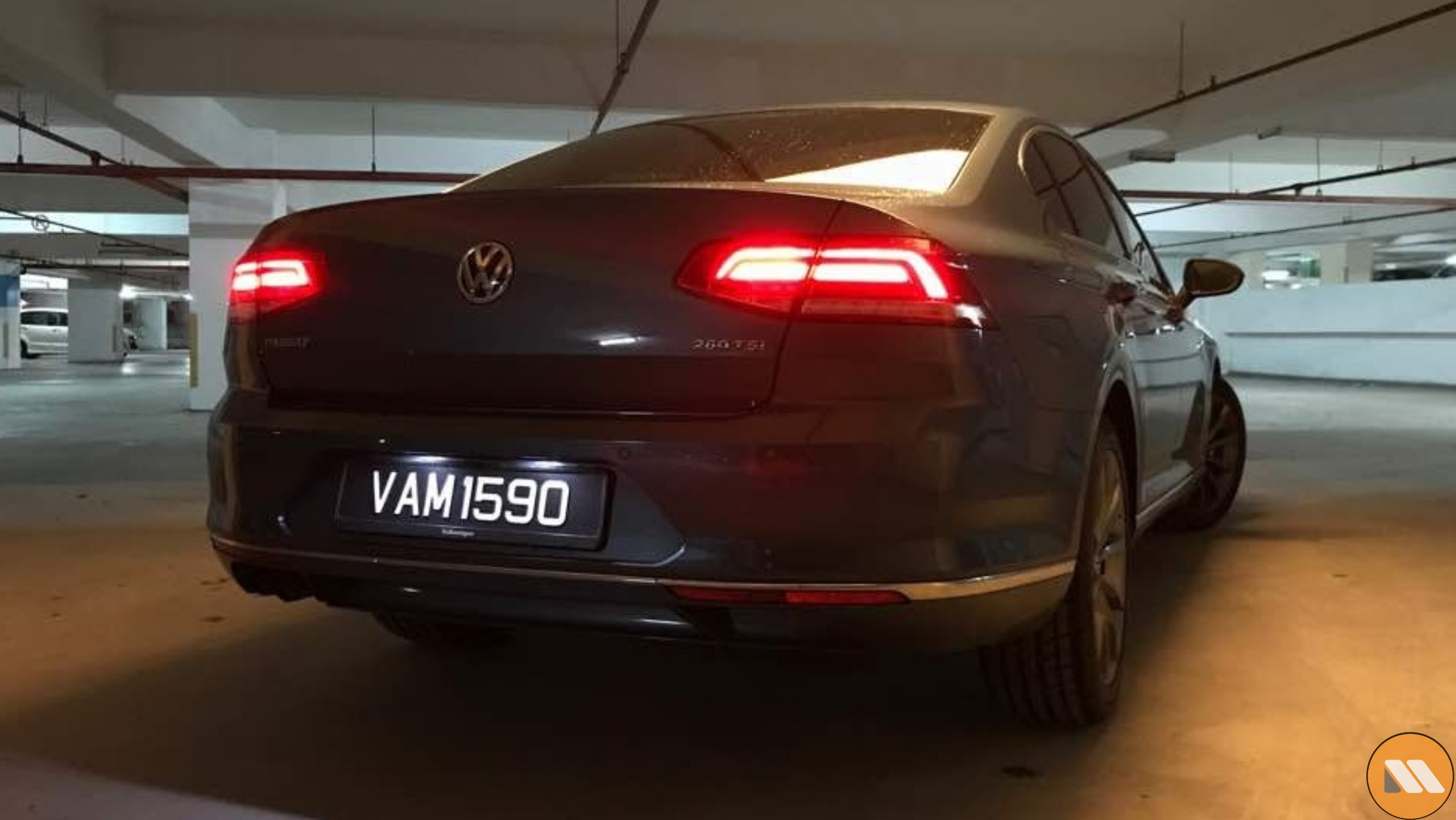
But it’s out on the road where the Passat really comes into its own. The imposing, distinctive face gives the car as much presence as any similarly-sized but vastly-pricier contender from the premium segment, as evidenced by the number of cars that moved to the left voluntarily as I came storming up behind them. Having owned several luxury cars in the past, I can say with certainty that the Passat deserves to be mentioned in the same breath as cars from Audi and the like, because its road manners are just impeccable. The steering is direct and responsive, and the suspension is incredibly well judged. This gives the Passat an incredible ability to simply eat up motorway miles without even the slightest complaint, and without tiring passengers unnecessarily.
Even though the Passat Comfortline comes with the smaller of the two engines, you won’t be left wanting. There’s plenty of poke to keep you going at well above highway speeds (we’re told), and the 7-speed DSG is willing to drop as many cogs as needed to give you all the shove you need to overtake the peskiest lane hogger. And once the situation has been dealt with, you can go back to cruising effortlessly, aided further with the inclusion of a massage function for the driver.
Even after the longest journey, the Passat Comfortline will leave most scratching their heads. Sure, it’s easy to simply categorise cars as either mass-market or luxury, but the Passat straddles both categories in one go. On the one hand, at RM165k it’s hardly going to flatten your bank account, but on the other, it offers an astoundingly resolved driving experience that punches well above its weight.
But you know what our late-20s up-and-comer is going to do? Buy an entry-level BMW 3-Series.
The Pros
- Mature, distinguished looks.
- Excellent on-road refinement.
- Punches above its weight.
The Cons
- Lacks advanced driver assistance systems.
- Cabin lacks visual verve.
Seriously capable of giving premium contenders a headache

Aiman I. Abdullah
The driving force behind MM, you will very rarely find Aiman doing something that isn’t testing a car, writing about a car, researching a car, or trying to buy a car.
It‘s a wonder how he isn’t living in one.


